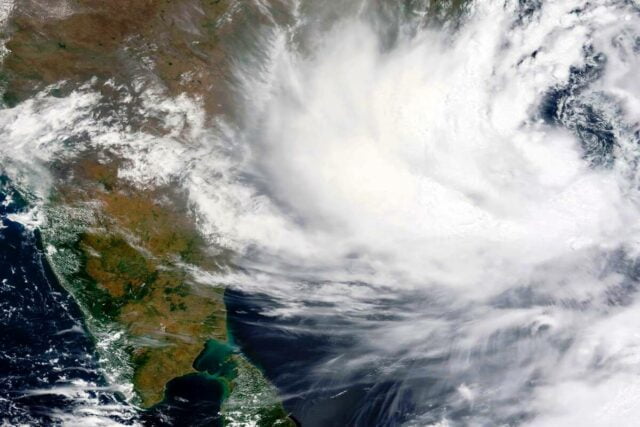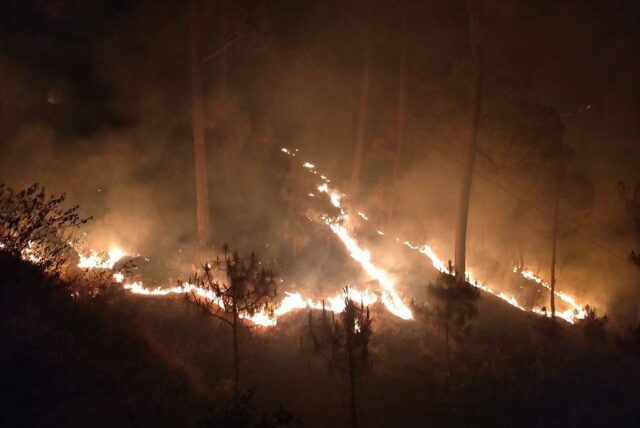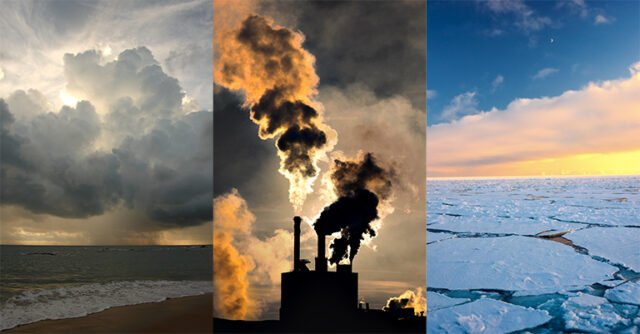Climate change is a considerable issue that needs to be tackled on a global level because with every passing year we get to hear about environmental destruction, either natural or man-made.
The latest Intergovernmental Panel on Climate Change (IPCC) report was published in August 2021, and the findings were terrifying. It clearly illustrates that if we don’t take care of climate change, we might lose our environment.
In the report, huge remarks about the future of the world have been made, but today we’ll take a look at what it means for India, specifically.
But first, before diving into the findings, let’s find out what the IPCC report is.
What Is The IPCC report?
The United Nations Environment Programme (UNEP) and World Meteorological Organization created IPCC in 1988 intending to provide an assessment of climate change periodically to the global nations so that they could take relevant steps towards it.
The report assesses scientific climate change, the impacts it would have on the environment and solutions that could be adopted to minimise the impact.

The sixth assessment report of IPCC was finally released in August after a long delay caused due to the COVID-19 pandemic. The report was made after five years of extensive research and approval of 234 scientists from 60 countries.
Scientists had gone through more than 14,000 research papers on climate change published around the world.
Findings Of The Report About Our Nation
The IPCC’s Sixth Assessment Report (AR6) ‘Climate Change 2021: The Physical Science Basis’ finds that the average global temperature is anticipated to rise by 1.5°C or more during the next 20 years.
According to the report, human-caused greenhouse gas emissions are responsible for around 1.1°C of warming between 1850 and 1900.

With “moderate confidence”, the IPCC report has also mentioned that due to urbanisation, intense rainfall has arisen in South Asian cities and its evidence can be seen in the Indian regions.
The experts have also commented that this report must be taken seriously, and steps towards it should be taken by all the South Asian countries, including India.
The IPCC report mentioned, “Rainfall has been on the decline and monsoon deficits on the rise in different regions in south Asia. Agreement among datasets invoke confidence about a decrease in mean rainfall over most parts of the eastern and central north regions of India.”

The report further mentioned that since the 1950s, heavy precipitation events have increased in India while the amount of moderate rainfalls has seen a decline. The main cause of this, according to the report, is “anthropogenic aerosol forcing”.
Anthropogenic aerosol is a suspension of fine solid particles or liquid droplets in the air caused mostly by particulate and smoke emissions from cars, industry, and other sources. The level of air pollution, specifically with toxic matters, is highest in the Indian subcontinent.
Also Read: In Pics: Some Young Unknown Greta Thunbergs Who Are Doing Some Amazing Climate Change Work Too
A leading author of the IPCC report, Subimal Ghosh of the Indian Institute of Technology, Mumbai, states, “Air pollution has increased over the Indian subcontinent, and so have aerosol levels; it acts as a barrier and reduces the difference of temperature between sea surface and land. This provides a cooling effect and reduces monsoon intensity”.
The report mentioned that instances of droughts will be less and monsoon will be high in India, however, these findings were labelled with “low confidence”.
Talking about Asia, the IPCC report also highlighted, “Intensity and frequency of hot extremes, such as warm days, warm nights, and heat waves; and decreases in the intensity and frequency of cold extremes, such as cold days and cold nights”.
However, the report also said that India, along with Pakistan, might have to suffer more due to intense heat waves of higher frequency for a prolonged period.

Examples of Cyclone Yaas and forest fires in India were mentioned in the IPCC report as well. Raising a warning sign for the mountainous region in India, the report, with “high confidence” said, “During the 21st century, snow-covered areas and snow volumes will decrease in most of the Hindu-Kush Himalayan and snowline elevations will rise and glacier volumes will decline.
A general wetting across the whole Tibetan Plateau and the Himalaya is projected, with increases in heavy precipitation in the 21st century.”

“The South Asian governments, including India, must keep the report findings in mind as they plan future courses of action for economic recovery,” said Director of Climate Action Network South Asia, Sanjay Vashist.
Reaction Of India Towards The IPCC Report
The Government of India welcomed the sixth agreement of the IPCC report with an open heart and said that “historical cumulative emissions” have caused a severe climatic crisis.
The Ministry of Environment, Forests and Climate Change said, “Developed countries have usurped far more than their fair share of the global carbon budget”.
Bhupendra Yadav, the Environment Minister said, “The report was a clarion call for the developed countries to undertake immediate, deep emission cuts and decarbonisation of their economies”.
In a statement, the government further added, “India notes that the rising temperature will lead to increased frequency and intensity of extreme events including heat waves and heavy rainfall.”
The government listed various initiatives such as International Solar Alliance and Coalition for Disaster Resilient Infrastructure and assured that “India’s actions to address global climate change are 2°C compliant and rated highly by several independent agencies of the world”.
A claim was made by the government that said the IPCC report proves that India is taking numerous steps to tackle climate change and the country is on the path of decoupling its greenhouse gas emissions for stable economic growth.

In a recent monsoon session held in Parliament, the government pointed out, “India lacked indigenous research reports establishing the connection between climate change and extreme events. “There is no established study for India providing a quantified contribution of climate change triggering extreme heat, rain and drought”.
Various natural disasters have occurred in this and the previous years like forest fires in Uttarakhand, floods in the Northeast Indian region and cyclones like Amphan and Yaas. And the latest is Cyclone Gulab.

These events have taken the lives of many, replaced 2.4 million people and has also resulted in a financial loss of $14 billion. We must take this as a warning from the environment and start acting more consciously before we find ourselves burning hot in the microwave called Earth!
Image Sources: Google
Sources: Down To Earth, The New Indian Express, The Quint, The Print
Connect with the blogger: Palak Dogra
This post is tagged under: climate change in india, what is climate change, global climate change, global warming, impact of climate change, climate change and global warming, effects of climate change, causes of climate change, climate change causes, climate change upsc, climate change project, ministry of environment forest and climate change, climate change performance index, climate change definition, climate change news, climate change speech, impacts of climate change, climate change and the inuit, essay on climate change, climate change examples, ipcc report






























